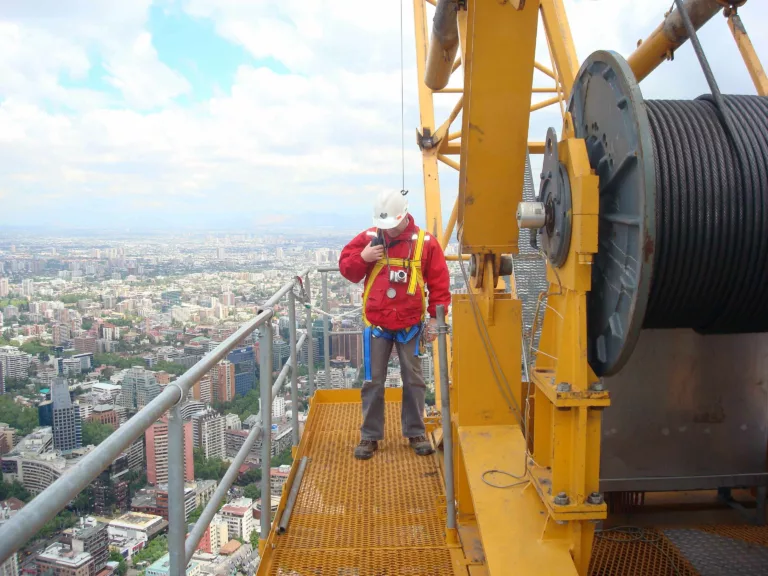Two-Way Radio Advanced Safety Features
At National Wireless, we understand that safety is a priority for many of our clients. Our Two-Way radio systems help protect your staff with advanced radio features such as lone worker and man-down alarms. Ensure the security your staff need and respond effectively to emergencies with dedicated emergency buttons, custom programmed voice alerts, and encryption security software to prevent eavesdropping.
Lone worker and man-down alarms enable instant communication during emergencies and secure monitoring of those working alone or in high-risk environments. Dedicated emergency buttons give your team the access to site-wide or direct messaging in emergency situations.
Man-Down Alarms
A man-down alarm is designed to detect when a user becomes incapacitated or unable to respond due to a fall, injury, or other emergency.
Activated automatically by sensors within the radio, the man-down alarm sends an immediate distress signal to other users, alerting them to the user’s condition and location.
In industries such as construction, manufacturing, and healthcare, where workers may encounter hazardous conditions or work alone in remote areas, man-down alarms play a pivotal role in ensuring the safety and well-being of personnel.
How does it work:
Man-down alarms can be automated with an “integrated accelerometer”, which sends out an alarm if the radio is tipped more than 45 degrees for over 30 seconds, indicating a fall or an emergency. This also applies to a lack of movement in an area for a prolonged period, or if a device exceeds a set boundary.

Lone Worker Prompt
A lone worker alarm, featured on certain two-way radios, is a critical safety feature designed to protect individuals working alone or in isolated environments.
Activated by the press of a button or triggered automatically in the event of prolonged inactivity, this alarm notifies nearby colleagues or a central monitoring station of a potential emergency.
In industries such as construction, healthcare, and manufacturing, where workers may encounter hazardous conditions or face risks of injury, lone worker alarms provide a vital lifeline, enabling swift response and assistance. By incorporating lone worker alarms into their communication systems, businesses prioritise the safety and well-being of their employees, fostering a secure work environment and mitigating potential risks.
How does it work:
If a user has not had any activity on a radio within a period of time, an alert will be sent to them. If the user does not respond to this alert, an alarm will be sent to all recipients. The radios can also be equipped with GPS tracking, allowing recipients to track the user’s location.
Radio Emergency Buttons
Radio dedicated emergency buttons are quick access instant-communication prompts located on a large variety of two-way radios.
By pressing the button, end users can provide fleet-wide alerts, requesting assistance or warning others of potential hazards. custom programming can change this feature to alert site operators directly, switch end users to dedicated emergency channels, or provide audible assistance requests.
The rapid response and easy navigation of emergency buttons make them in indispensable feature in high-activity workplaces and can provide timely, user-dedicated responses to emergency situations.
How does it work:
Emergency buttons provide override prompts to an entire radio network, this can function in the form of direct messaging, side-wide notifications, audio alerts, and other forms. This button continues the alert for extended periods.
Custom Programmable Alerts
Large site operations face increased risk as a result of their broader activities and numerous staff. National Wireless programmed customised alerts allow operators to efficiently manage large scale emergency operations with dedicated audio files, visual alerts, and dedicated channels for each situation.
Watch our tech team’s demonstration on operating multiple emergency alert tones for large mine sites.
How does it work:
Customised programmable alerts provide audio/visual updates which can be sent to an entire fleet from dedicated control operators.
We can program which radio roles have permission to post these alerts, the nature of the notification.
National Wireless can offer:
- Expert advice from our sales team – every industry, every step of the way.
- No-obligation free-trial of our radios.
- Exceptional service and repairs from our team of qualified technicians.
- Free radio coverage tests and site visits to ensure reliable communication.
- After-sales support and assistance – we’re with you for the long haul.
